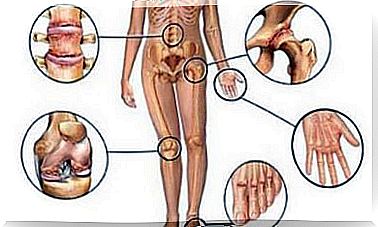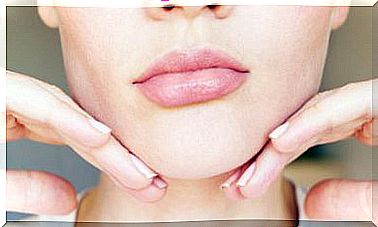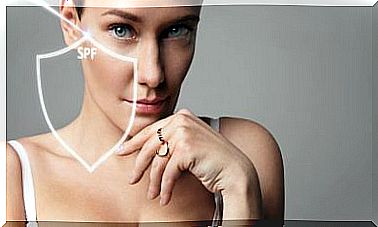Plagiocephaly Of The Baby: Prevention And Treatment
Plagiocephaly is the most common craniofacial abnormality. It consists of an asymmetric distortion of the baby’s skull. This is flattened in the posterior area (occipital) and has a shape similar to a rhombus.
It is a purely aesthetic disorder, which does not affect the intellectual development of the baby. Its incidence is high and is mainly due to the position in which the baby is placed to sleep. It occurs when, from birth, the newborn sleeps on his back, with his head always to the same side.
However, it can also be present from birth. In these cases it may be due to a narrowing of the mother’s pelvis or even to some complication in childbirth. In this article we explain how to prevent and treat it.
Why does plagiocephaly form?
Plagiocephaly is caused by pressure exerted on the baby’s skull. It can be during fetal development, at the time of delivery or after it.
The incidence of plagiocephaly has increased markedly because, currently, pediatricians recommend placing the baby on his back to sleep.
This position prevents the newborn from suffering a sudden death during sleep, but it also exerts continuous pressure on the same area of the skull that ends up deforming it. Similarly, baby carriers have also been linked to this increased incidence.

Other situations that can lead to plagiocephaly are:
- Premature delivery
- Congenital muscular torticollis. It causes the baby to always rest on the same area of the skull.
- An improper position inside the uterus.
- Trauma during childbirth.
Symptoms of plagiocephaly
As we have mentioned before, it is an aesthetic pathology. It does not compromise the intellectual development of the baby. The most outstanding thing is that it produces facial and cranial asymmetry, which is why it is very evident. It also makes the ears misaligned and the forehead puffed up.
Plagiocephaly can decisively determine the baby’s self-esteem in the future. Therefore, it is very important to know certain measures to prevent it and treat it in time.
How to prevent?
Since the baby must sleep on his back, it is important to move his head posture. Ideally, you should alternate the support side between left and right. It is recommended that the child spend some time on his stomach while awake.
The Tummy time is a method for developing motor skills of the baby. It is only done when the baby is awake. It consists of placing the baby face down, as we have said before.
It can be done on the parent’s chest, in bed, or on any comfortable surface. Ideally, spend some time playing, under surveillance, in this position. Thus, in addition, the baby’s muscular capacity is reinforced.
The important thing is to avoid prolonged head support in the same posture. For this, he can be held in arms or in chairs that do not press on his skull. Therefore, it is recommended not to use seats that maintain a fixed posture, such as car restraints, for a long time.

In addition, other interactive measurements can be performed. For example, toys can be placed across the crib. Thus, the safest thing is for the baby to turn its head. Another way is to lift the mattress slightly to tilt it.
Treatment of plagiocephaly
Treatment is only used when the above measures have not worked. First of all, shaping helmets can be used. It consists of applying moderate pressure on the skull. In addition, they prevent the head from resting on the deformity.
They are a dynamic orthotic cranioplasty system. They are used from the third month of life. It is very important that constant reviews are carried out.
The surgery alone has been used in very severe cases. In fact, it should only be done if the rest of the procedures have failed.
In conclusion
It is important to follow preventive measures to prevent this from happening. These are simple exercises or measures that will prevent the baby from having a major unsightly problem.
In the same way, the ideal is to go to the doctor with any doubt or anomaly. He will know how to advise you and help your baby.









